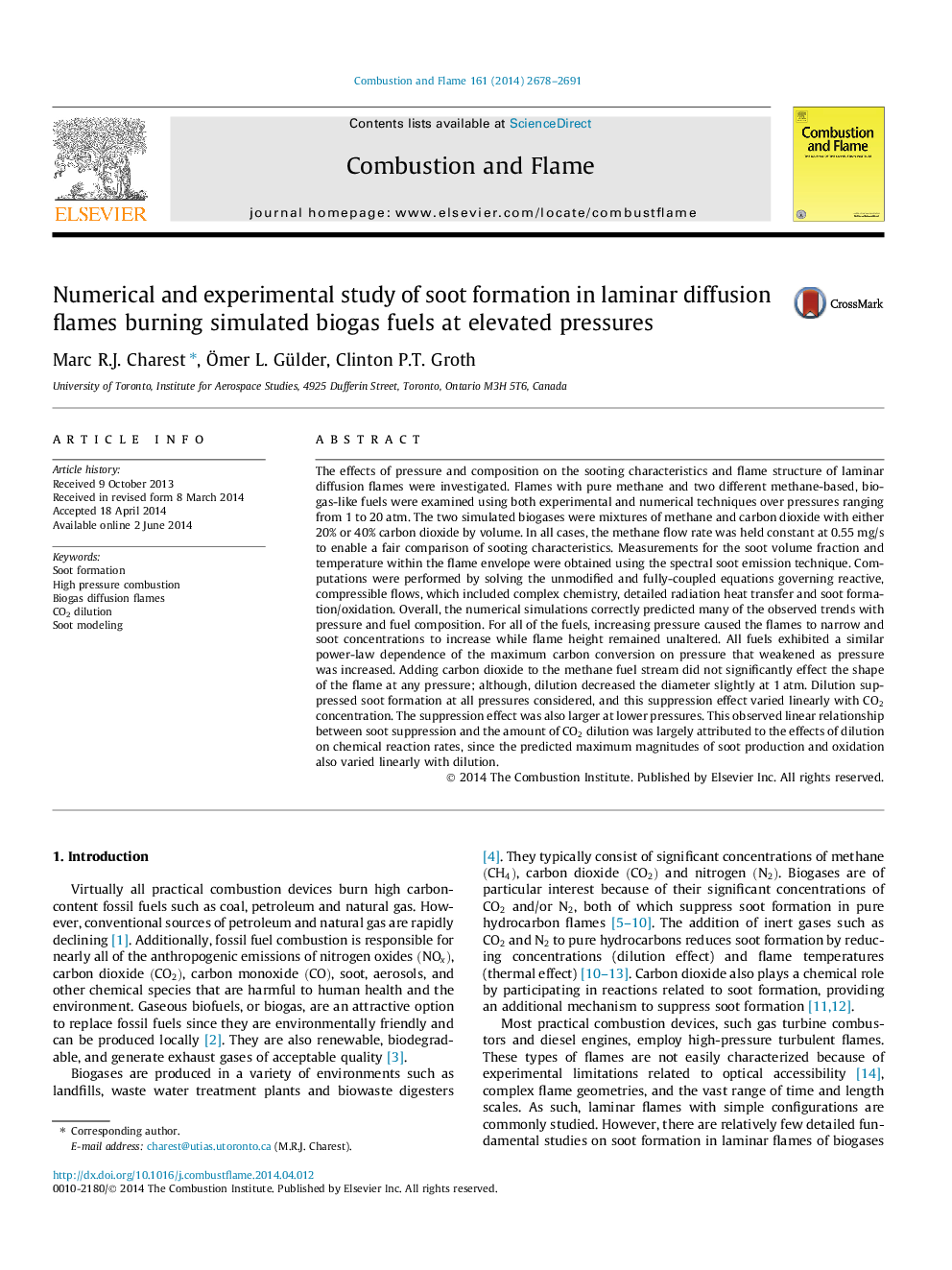| Article ID | Journal | Published Year | Pages | File Type |
|---|---|---|---|---|
| 169586 | Combustion and Flame | 2014 | 14 Pages |
The effects of pressure and composition on the sooting characteristics and flame structure of laminar diffusion flames were investigated. Flames with pure methane and two different methane-based, biogas-like fuels were examined using both experimental and numerical techniques over pressures ranging from 1 to 20 atm. The two simulated biogases were mixtures of methane and carbon dioxide with either 20% or 40% carbon dioxide by volume. In all cases, the methane flow rate was held constant at 0.55 mg/s to enable a fair comparison of sooting characteristics. Measurements for the soot volume fraction and temperature within the flame envelope were obtained using the spectral soot emission technique. Computations were performed by solving the unmodified and fully-coupled equations governing reactive, compressible flows, which included complex chemistry, detailed radiation heat transfer and soot formation/oxidation. Overall, the numerical simulations correctly predicted many of the observed trends with pressure and fuel composition. For all of the fuels, increasing pressure caused the flames to narrow and soot concentrations to increase while flame height remained unaltered. All fuels exhibited a similar power-law dependence of the maximum carbon conversion on pressure that weakened as pressure was increased. Adding carbon dioxide to the methane fuel stream did not significantly effect the shape of the flame at any pressure; although, dilution decreased the diameter slightly at 1 atm. Dilution suppressed soot formation at all pressures considered, and this suppression effect varied linearly with CO2CO2 concentration. The suppression effect was also larger at lower pressures. This observed linear relationship between soot suppression and the amount of CO2CO2 dilution was largely attributed to the effects of dilution on chemical reaction rates, since the predicted maximum magnitudes of soot production and oxidation also varied linearly with dilution.
